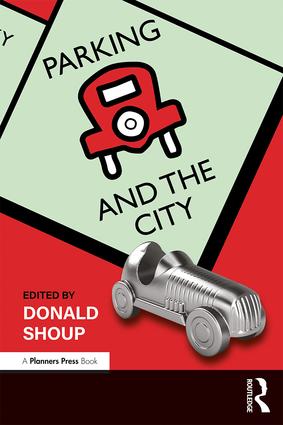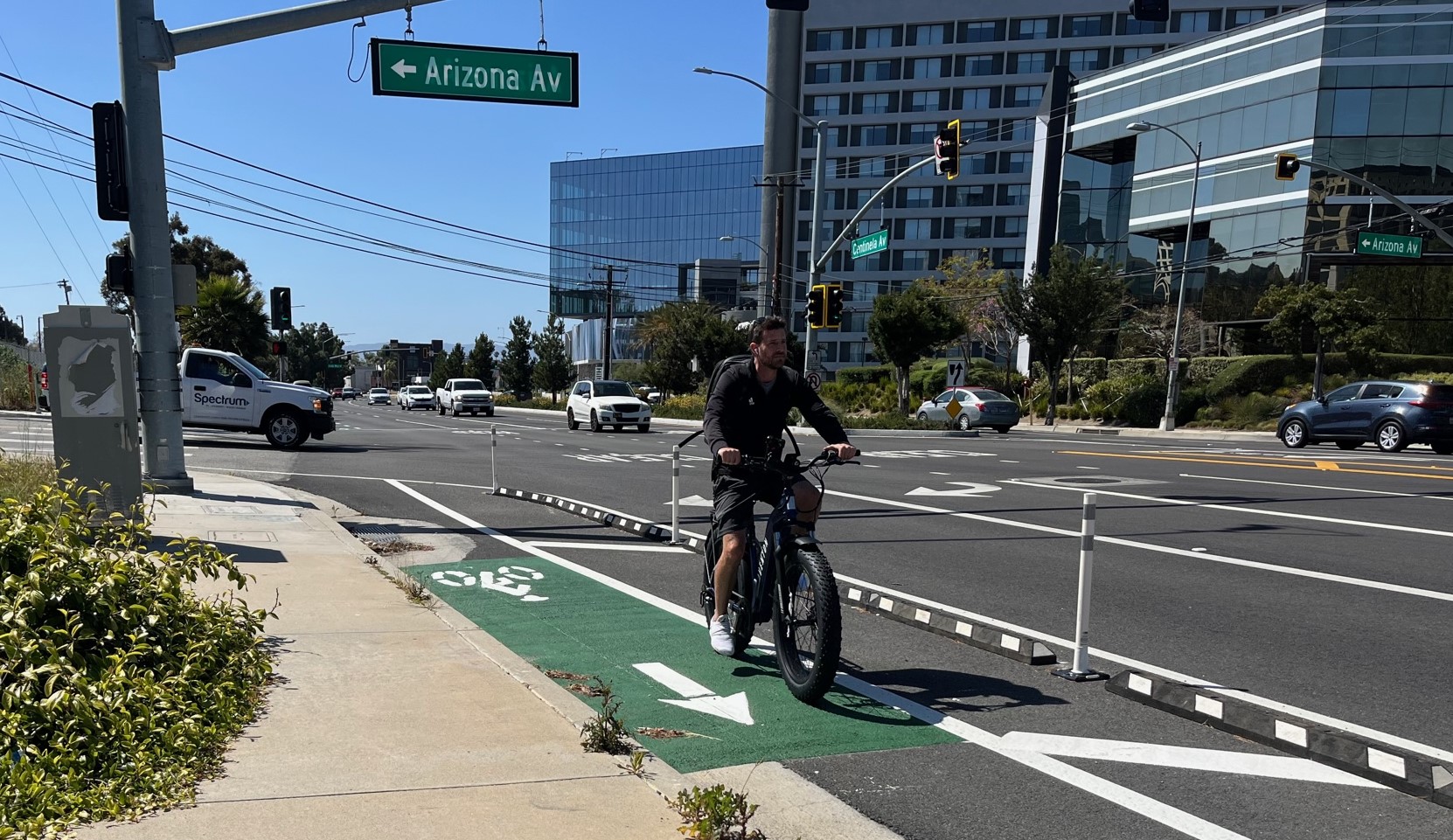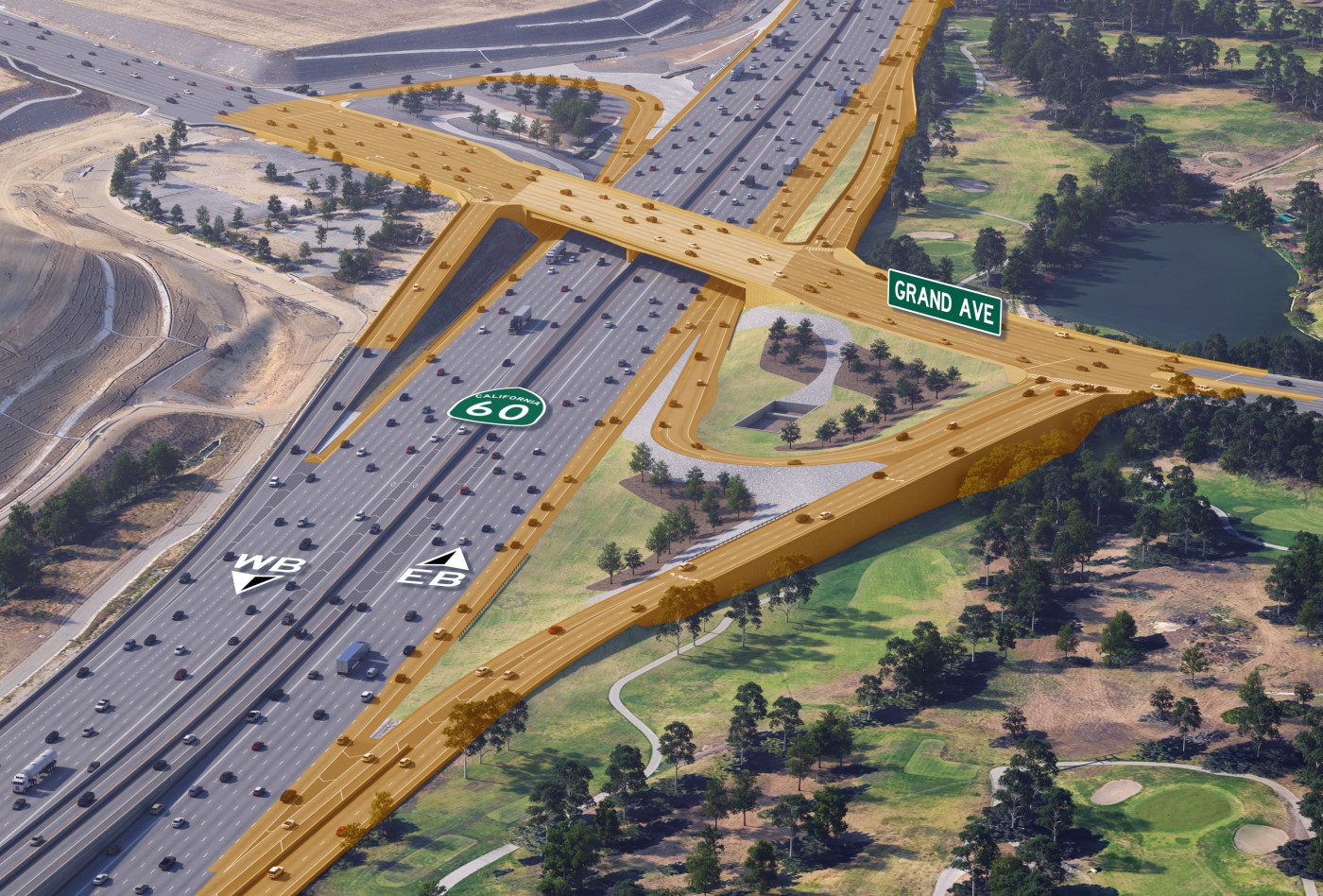Read Excerpts from Donald Shoup’s ‘Parking and the City’
11:41 AM PDT on June 13, 2018

Donate to SBLA this week to win a copy of Parking and the City by Donald Shoup
If you donate to Streetsblog Los Angeles during our Summer Fund Drive you could win a signed copy of Donald Shoup's new book Parking and the City. Donate by this Friday June 15 to be entered in the drawing.
Donald Shoup is the world's foremost expert on parking. In his books, articles, and talks, Shoup makes a compelling case for how parking has shaped communities, and how communities can reform parking regulations to achieve numerous goals from affordability to walkability to public health. Reading Shoup will change the way you look at and think about cities and streets. Below are a few excerpts from Shoup's Parking and the City.
From the preface:
The American Planning Association published The High Cost of Free Parking in 2005. Surprising everyone, this 750-page book on parking was popular enough to reprint, with additions, as an 800-page paperback in 2011. Since then, many people have asked for a shorter version of the book to appeal to general readers who are concerned about the future of cities but don’t want to buy or read an 800-page book about parking.
The Introduction to Parking and the City is this shorter, updated version of The High Cost of Free Parking. The following 51 chapters then report on the subsequent flowering of research and action on three recommended parking reforms: (1) remove off-street parking requirements, (2) charge the right prices for on-street parking, and (3) return the revenue to pay for local public services.
Writing about parking without being boring presents quite a challenge.
From the introduction:
At the dawn of the automobile age, suppose Henry Ford and John D. Rockefeller had asked how city planners could increase the demand for cars and gasoline. Consider three options. First, divide the city into separate zones (housing here, jobs there, shopping somewhere else) to create travel between the zones. Second, limit density to spread everything apart and further increase travel. Third, require ample off-street parking everywhere so cars will be the easiest and cheapest way to travel.
U.S. cities have unwisely adopted these three car-friendly policies. Separated land uses, low density, and ample free parking create drivable cities but prevent walkable neighborhoods. Although city planners did not intend to enrich the automobile and oil industries, their plans have shaped our cities to suit our cars. Cars themselves have also reshaped our cities. As John Keats (1958, 13) wrote in The Insolent Chariots, “The automobile changed our dress, manners, social customs, vacation habits, the shape of our cities, consumer purchasing patterns, and positions in intercourse.” Many of us were probably even conceived in a parked car. Parking requirements in zoning ordinances are particularly ill advised because they directly subsidize cars. We drive to one place to do one thing, and then to another place to do another thing, and then finally drive a long way back home, parking free almost everywhere.
Off-street parking requirements are a fertility drug for cars.
In The High Cost of Free Parking, which the American Planning Association published in 2005, I argued that parking requirements subsidize cars, increase traffic congestion, pollute the air, encourage sprawl, increase housing costs, degrade urban design, prevent walkability, damage the economy, and penalize people who cannot afford a car. Since then, to my knowledge, no member of the planning profession has argued that parking requirements do not cause these harmful effects. Instead, a flood of recent research has shown they do cause these harmful effects. Parking requirements in zoning ordinances are poisoning our cities with too much parking.
On average, cars are parked 95 percent of their lives and driven only 5 percent. As a result, cities require an enormous amount of land for parking. In Los Angeles County, all the parking spaces that cities require cover at least 200 square miles of land, equivalent to 14 percent of the county’s incorporated land area and 1.4 times larger than the 140 square miles dedicated to the roadway system.
Ultimately, parking requirements can make driving more difficult because all the cars engendered by the required parking spaces clog the roads and congest traffic. Los Angeles has more parking spaces per square mile than any other city on earth, and, according to the INRIX 2016 Global Traffic Scorecard, Los Angeles also has worse traffic congestion than any other city on Earth.
Despite all the harm off-street parking requirements cause, they are almost an established religion in city planning. One should not criticize anyone else’s religion, but when it comes to parking requirements I’m a protestant and I believe city planning needs a reformation.
Most people consider parking a personal issue, not a policy question. When it comes to parking, rational people quickly become emotional and staunch conservatives turn into ardent communists. Thinking about parking seems to take place in the reptilian cortex, the most primitive part of the brain responsible for making snap judgments about urgent fight-or-flight issues, such as how to avoid being eaten. The reptilian cortex is said to govern instinctive behavior involved in aggression, territoriality, and ritual display—all important issues in parking.
Parking clouds the minds of reasonable people. Analytic faculties seem to shift to a lower level when one thinks about parking. Some strongly support market prices—except for parking. Some strongly oppose subsidies—except for parking. Some abhor planning regulations—except for parking. Some insist on rigorous data collection and statistical tests—except for parking. This parking exceptionalism has impoverished our thinking about parking policies, and ample free parking is seen as an ideal that planning should produce. If drivers paid the full cost of their parking, it would seem too expensive, so we ask someone else to pay for it. But a city where everyone happily pays for everyone else’s free parking is a fool’s paradise.
Daniel Kahneman, who won the Nobel Prize in economics in 2002 for his research integrating psychology and economics, summarized some of this research in Thinking, Fast and Slow. He examined two modes of thought. Fast thinking is instinctive, emotional, and subconscious, while slow thinking is logical, calculating, and conscious. It’s hard to be rational about an emotional subject, but when thinking about parking, we should slow down.
I hope Parking and the City will convince readers that parking is worth taking seriously. Few people are interested in parking itself, so I always try to show how parking affects whatever people do care strongly about, such as affordable housing, climate change, economic development, public transportation, traffic congestion, and urban design. For example, parking requirements reduce the supply and increase the price of housing. Parking subsidies lure people into cars from public transportation, bicycles, or their own two feet. Cruising for under-priced curb parking congests traffic, pollutes the air, and creates greenhouse gases. Do people really want free parking more than affordable housing, clean air, walkable neighborhoods, good urban design, and a more sustainable planet? Recognizing that our misguided parking policies block progress toward many goals that people care deeply about— from providing affordable housing to slowing global warming—may spark a planning reformation. Reforms in planning for parking may be the simplest, cheapest, quickest, and most politically feasible way to achieve many important policy goals.
Read more of Shoup's Parking and the City if you win a signed copy via Streetsblog's Summer Fund Drive. Donate today!
Stay in touch
Sign up for our free newsletter
More from Streetsblog Los Angeles
Eyes on the Street: Recent Centinela Bike Lanes in Culver City
The new partially-protected Centinela facility is a welcome safety upgrade for a stretch that long lacked any type of bikeway, but the area remains not all that bike-friendly
This Week In Livable Streets
Bike Month continues, Metro 91 Freeway widening, Destination Crenshaw, Culver City Bus, Santa Monica MANGo, Metro bike lockers, Metro Sepulveda Transit, and more
San Fernando Valley Bus/Bike Updates: G Line, Roscoe Bus Lanes, Laurel Canyon Bike Lanes
Short newly protected bike lane on Laurel Canyon Blvd, extensive NSFV bus improvements under construction this month, and scaled-back G Line plans should get that project under construction this summer




